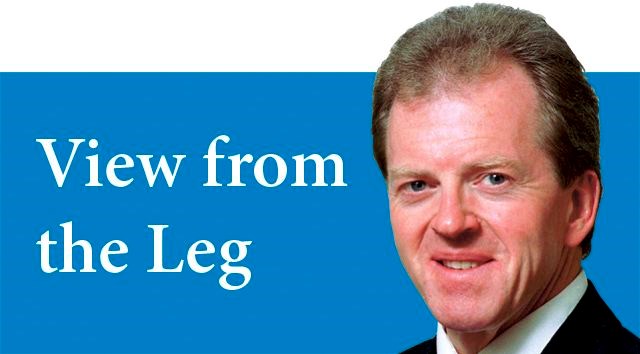After weeks of hints to the contrary, NDP house leader Mike Farnworth announced Tuesday that his party could manage the business of the legislature without changing the long-standing operating rules.
"We are confident that we will be able to make this house work," Farnworth told reporters after the B.C. Liberals again expressed doubt that the NDP-Green alliance could manage a one-seat majority.
"The standing orders have served this province well since 1871," he continued, putting paid to earlier suggestions from New Democrats and Greens that a rewrite was needed. "I feel quite confident that the existing standing orders will allow a government to function."
Pressed to say how this would be accomplished, Farnworth said reporters should wait and see. He also blasted the B.C. Liberals for asking the current Speaker, Steve Thomson, to clarify several outstanding procedural issues.
Later Farnworth did brief me and other members of the press gallery on how the New Democrats would use existing rules to minimize the risk of being defeated in the house.
The solution targets the problem that could arise when the house sits as "committee of the whole," the legislative name for more discursive sessions where members scrutinize ministry budgets in detail and legislation clause by clause.
The Speaker leaves the chamber when the house sits as a committee of the whole and the functionary known as deputy chair of the committee of the whole presides.
With the speaker out of the picture, and another member of government in the chair, the balance would be 43 Liberals and 42 members of the combined NDP-Green alliance. On those numbers, the Liberals could win every vote.
The prospect had New Democrats thinking they might have to rewrite the standing orders to absorb the proceedings of the committee of the whole into the main house or let the Speaker preside there as well.
Instead the New Democrats have opted for a workaround under current rules.
The standing orders have long provided for the business of the legislature to be split into two sections, with Section A matters sent to a large committee room ("the little house") while Section B resides in the main chamber ('the big house" - no jokes please.)
Moreover, as Farnworth went on to point out, successive governments have routinely appointed a working majority of their own members to dominate Section A. Under the B.C. Liberals, it was 10 to 7 in favour of the government.
Drawing on that precedent, the New Democrats believe they could send the more contentious matters to Section A where the NDP-Green majority would rule the day. No ties, hence no need for the chair of the committee to break them.
Meanwhile the main house would deal with measures that enjoyed broader support among the parties.
"The Puppies and Kittens Protection Act," as one NDP wag put it Tuesday.
As Farnworth basked in the glory of having cleared one of the procedural hurdles facing the NDP-Green alliance, the B.C. Liberals pointed out that the solution might not be as rosy as he imagines.
The 10-7 vote split in favour of the government in Section A is not automatic, said Mike de Jong, Farnworth's counterpart on the Liberal side.
Rather it has been proportional to the Liberals comfortable margin in the overall seat count for the past dozen years. When the government-to-opposition balance was closer in the late 1990s, Section A consisted of 10 government MLAs and eight from the then-opposition parties.
Today nine New Democrats and/or Greens and eight B.C. Liberals would be more appropriate, de Jong went on to suggest.
When I ran those numbers past Farnworth, he didn't fully subscribe to de Jong's interpretation.
He did note that even at 9-8, the Section A committee would still be manageable with the government-appointed chair breaking ties if the need arose.
This would not, one hastens to point out, eliminate all of the procedural hurdles in managing with a 44-43 seat majority.
Major business involving budgets and legislation would be dealt with in the main house. The Speaker would still be called on to exercise his/her casting vote to break the anticipated 43-43 standoffs.
Though the casting vote has rarely been exercised here in B.C., the guiding principles are that the Speaker should vote, wherever possible, to allow debate to proceed and to uphold the status quo.
The challenge arises on the third and final stage of the passage of a bill, when all opportunities for debate are exhausted and the house has to turn thumbs up or thumbs down.
"What's the Speaker supposed to do?" to quote Peter Milliken, who presided as Speaker of the federal parliament through 10 years and two minority governments up to 2011.
"Do I vote for changes in the law, or do I vote for the status quo? And is the status quo keeping the government in, or is it keeping the law as it is?" as he framed the questions in an interview last week with Maclean's magazine.
"The argument would be you've got to support the government so you've got to put it through. But my impression was at third reading on most things you vote against, because you're voting for the status quo."
In short, the dilemma is real and the New Democrats are dropping no hints about how their choice of Speakers would proceed to resolve it.



